My authentic Spanish sangria recipe is the best and easiest sangria recipe that exists. Make sangria the Spanish way with my tips!
Looking for non-traditional variations of sangria? Try my recipes for white wine sangria, warm spiced sangria, and cava sangria.
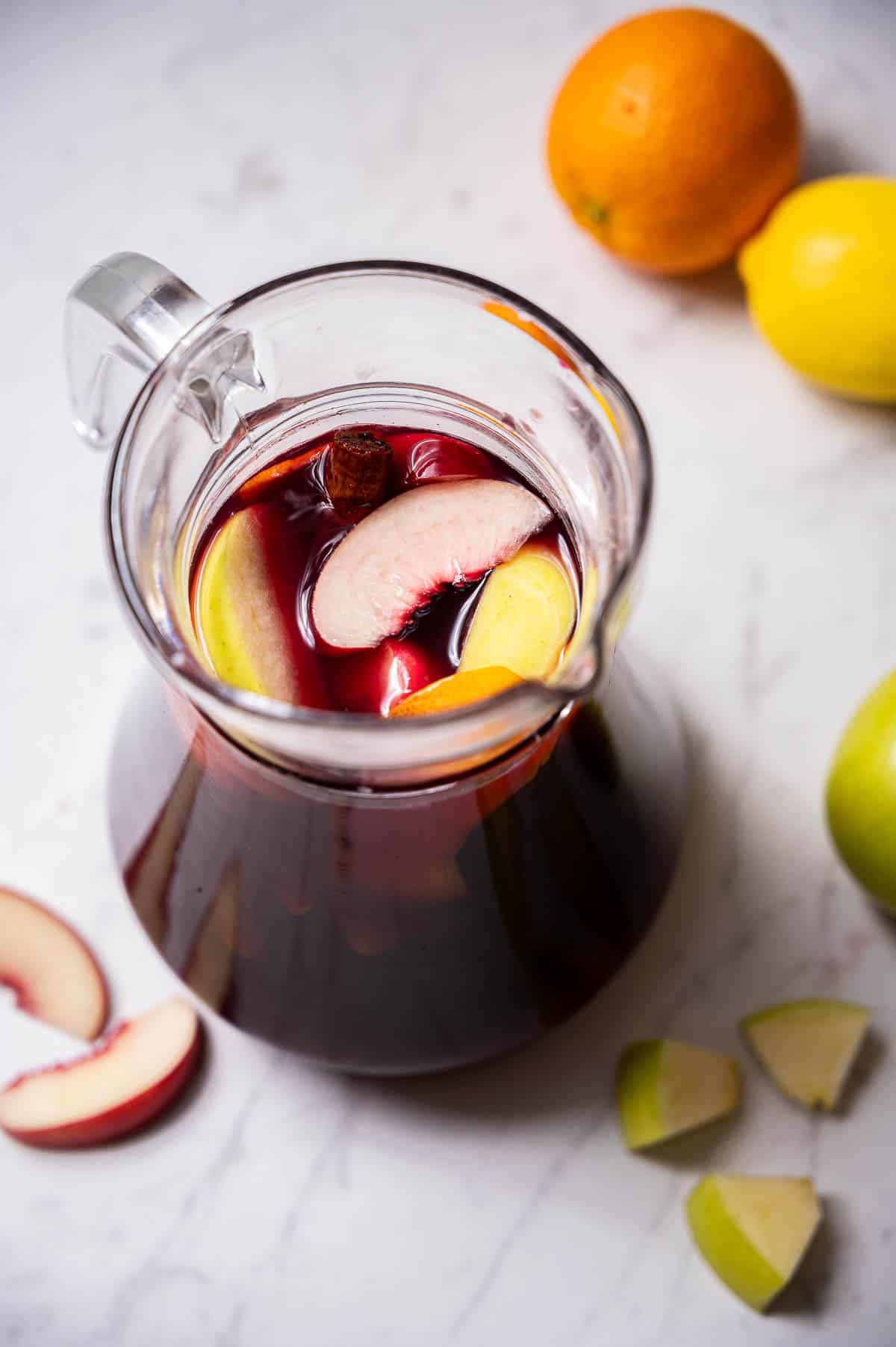
Spanish sangria-- it's one of Spain's most popular yet misunderstood drinks!
Jump to:
Introduction
Before food blogs and TripAdvisor, tourists to Spain expected little more than paella, sangria, and flamenco. Fortunately nowadays, more tourists are interested in the local specialties, such as Spain’s best craft beers or our popular gin tonics.
You might be wondering: is sangria simply a tourist trap, or is it an authentic Spanish creation? Yes, sangria is definitely Spanish!
The name comes from sangre (blood), alluding to the red color of the drink. Sangria can be a variety of wine-based cocktails, include cider and sake sometimes. However, here in Madrid, you’ll usually find Spanish recipes made traditionally, and this Spanish sangria recipe is no different.
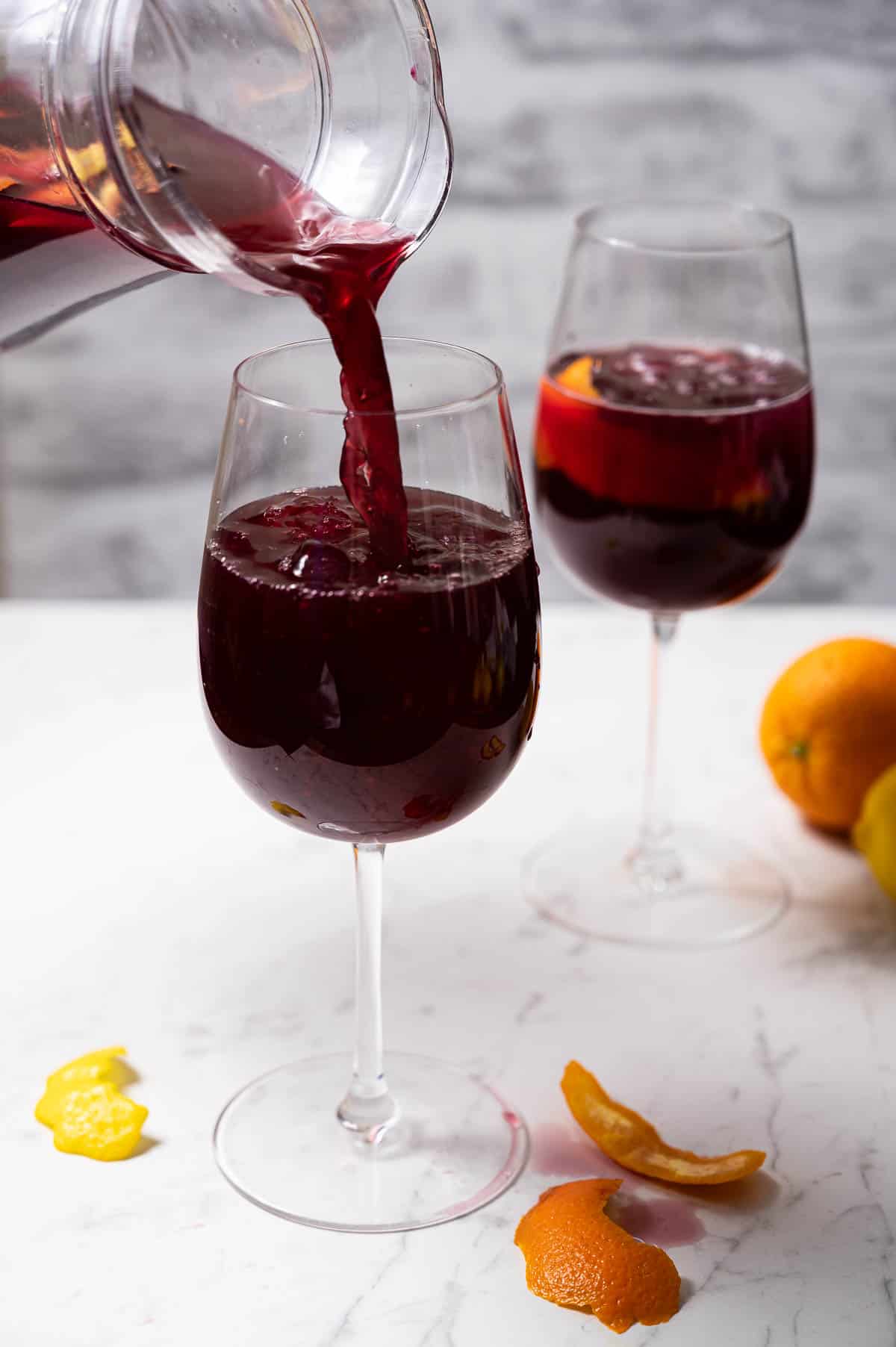
History
The story of sangria started over 2,000 years ago when the Romans inhabited the Iberian Peninsula and made their own wine. At this time, water wasn't always safe to drink, so it was common practice to add some alcohol to kill off the bacteria. This practice eventually gave rise to the first sangrias, which were likely a mix of wine, water, herbs, and spices—anything they had to make the water taste better!
In 1964, sangria surged in popularity after thousands tried it for the first time in the Spanish Pavilion at the New York World's Fair. Americans enjoyed this delicious red wine punch, and before long, countless variations had been invented by cookbook authors and bartenders.
Although sangria enjoys great popularity in America, it’s not as common of a choice with locals in most of Spain. Although many people make it at home with whatever ingredients are on hand, it can also be purchased in the soft drinks section of the supermarket. Of course, many bars serve their version of sangria to tourists, but locals often prefer the simpler tinto de verano drink in the summer.
Ingredients
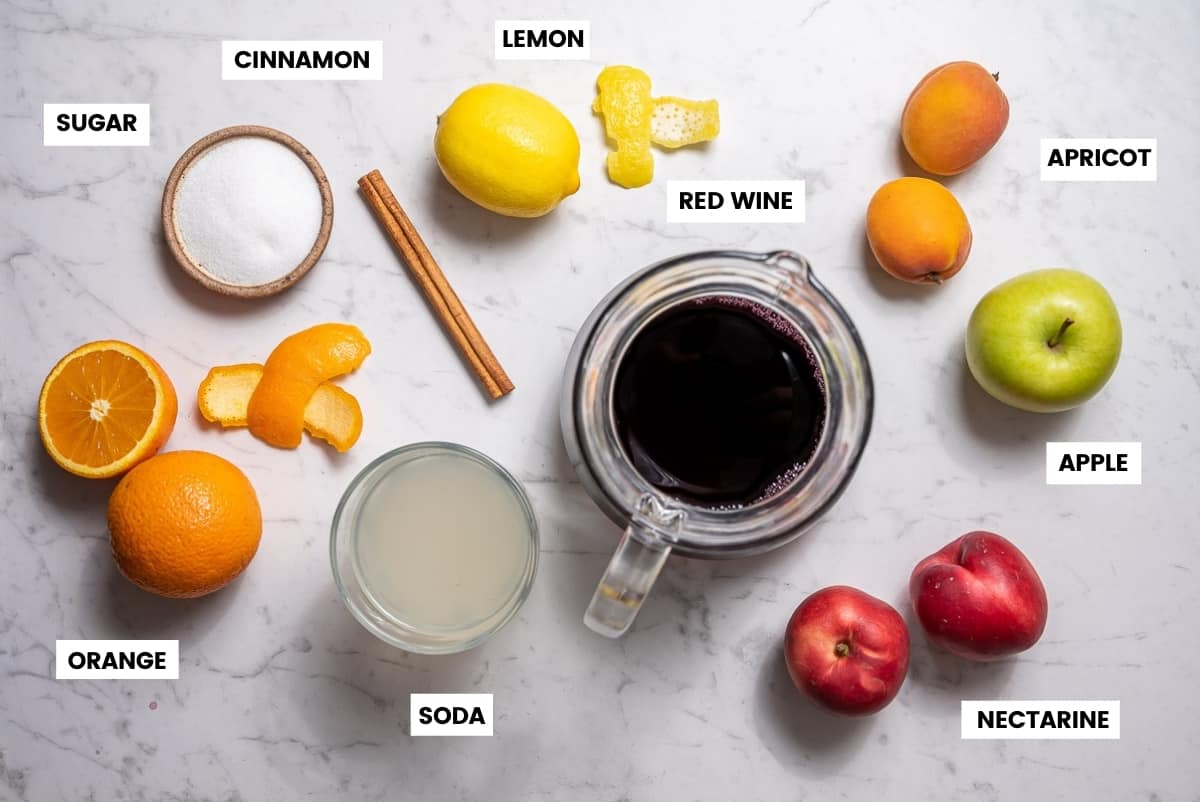
Wondering what ingredients you need to make a delicious, authentic batch of Spanish sangria? Let's chat about what you need and what's optional.
- Red Wine: Use a good quality, young and fruity table wine; something you would drink on its own, but not one that is complex or expensive. Avoid poor quality wines and ones with an oak flavor.
- Fruit: The most common choices are citrus fruit, such as lemon and orange. Other optional fruits are peach, apricot, and green apple.
- Spices: Traditional sangria recipes keep it simple and stick to a flavorful stick of cinnamon.
- Sugar: This is optional; add it only if you want a sweeter sangria. I prefer adding sugar in the form of simple syrup, as it incorporates better.
- Soda: This is optional. Traditional Spanish sangria doesn't have any carbonation because these drinks hadn't been invented when sangria was created. If you like the extra fizz, add a bit of soda water or lemon soda to your sangria right before drinking.
See recipe card for full information on ingredients and quantities.
Variations
- Spices: Experiment with adding star anise, nutmeg, ginger, or cloves for more flavor options.
- Wine: If you swap the traditional fruity red wine for a different variety, you'll have a different variation of sangria. Feel free to experiment if you want.
- Extra Alcohol: If you want your sangria to pack more of a punch, add a couple of ounces of Spanish brandy or vermouth. My favorite sangria bars in Spain add vermouth to their sangria jugs.
How to Make
If you’d like to see the full ingredients and instructions, scroll to the bottom of the post for the printable recipe card.
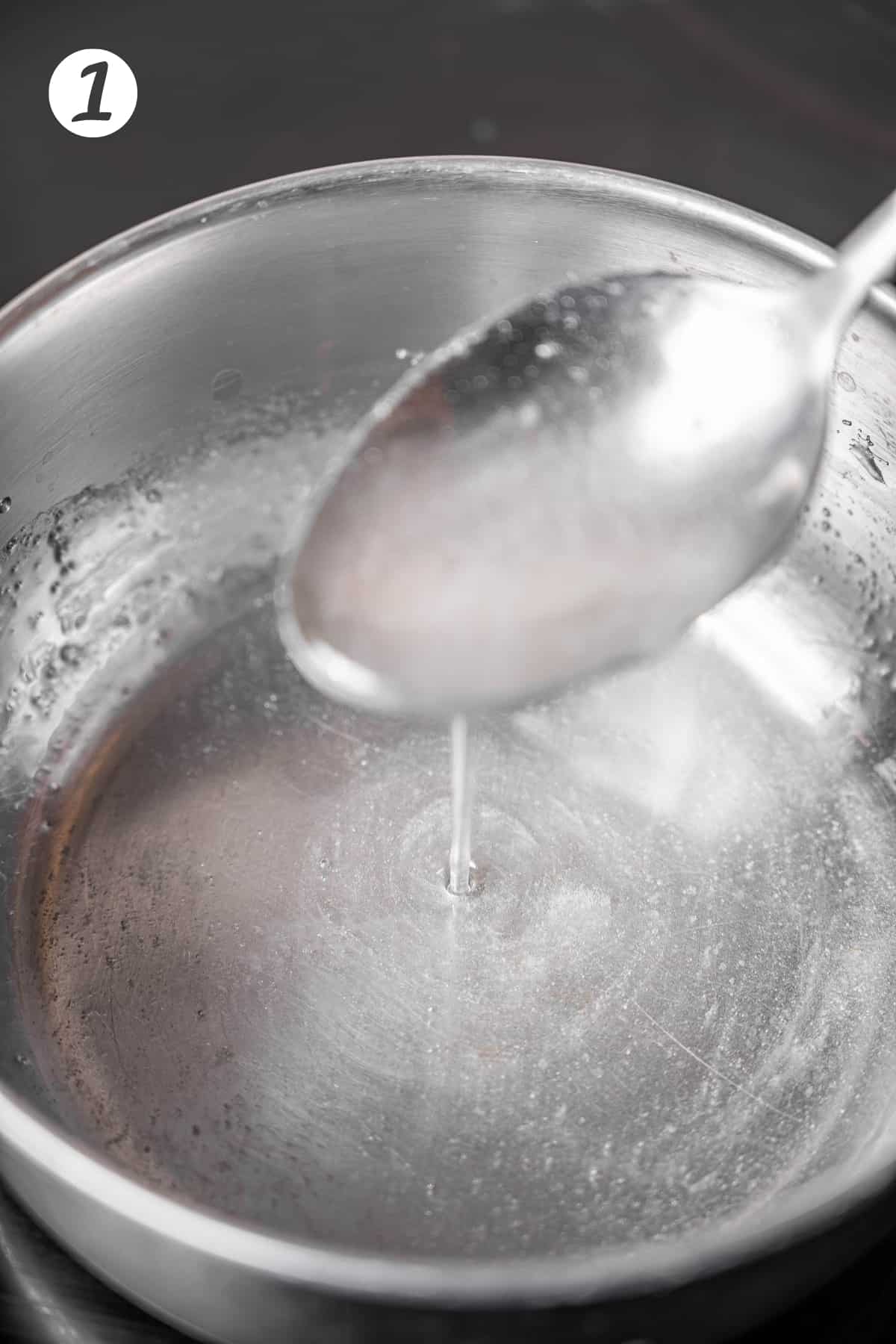
- Make a simple syrup. I like to use a 1:1 ratio of water to granulated sugar by volume. Let it cool while you prepare the rest of the sangria.
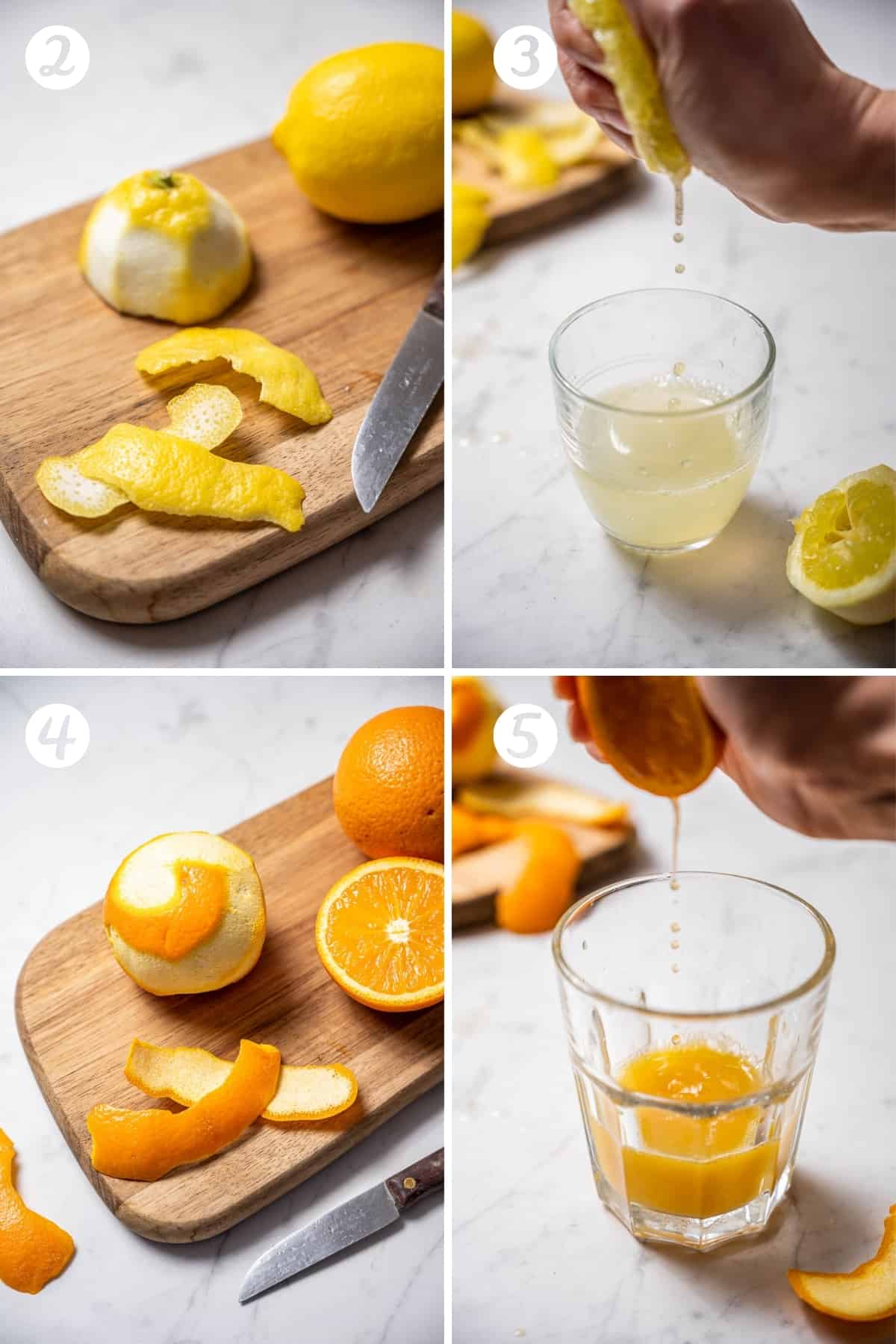
2-3. Peel and juice the lemons.
4-5. Peel and juice the oranges.
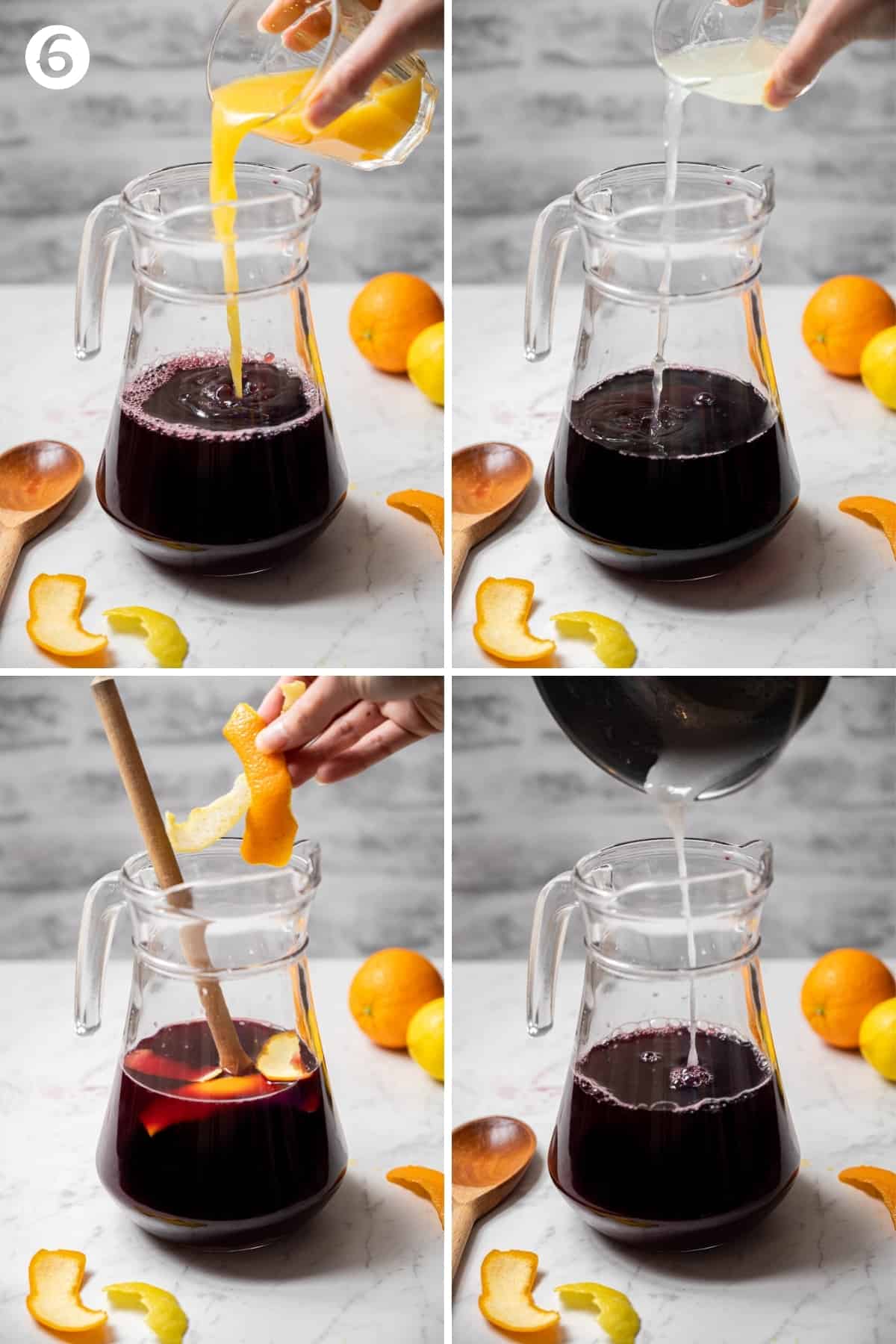
6. Pour the wine into a big pitcher or pot and add the citrus juice and rinds. Add simple syrup to taste.
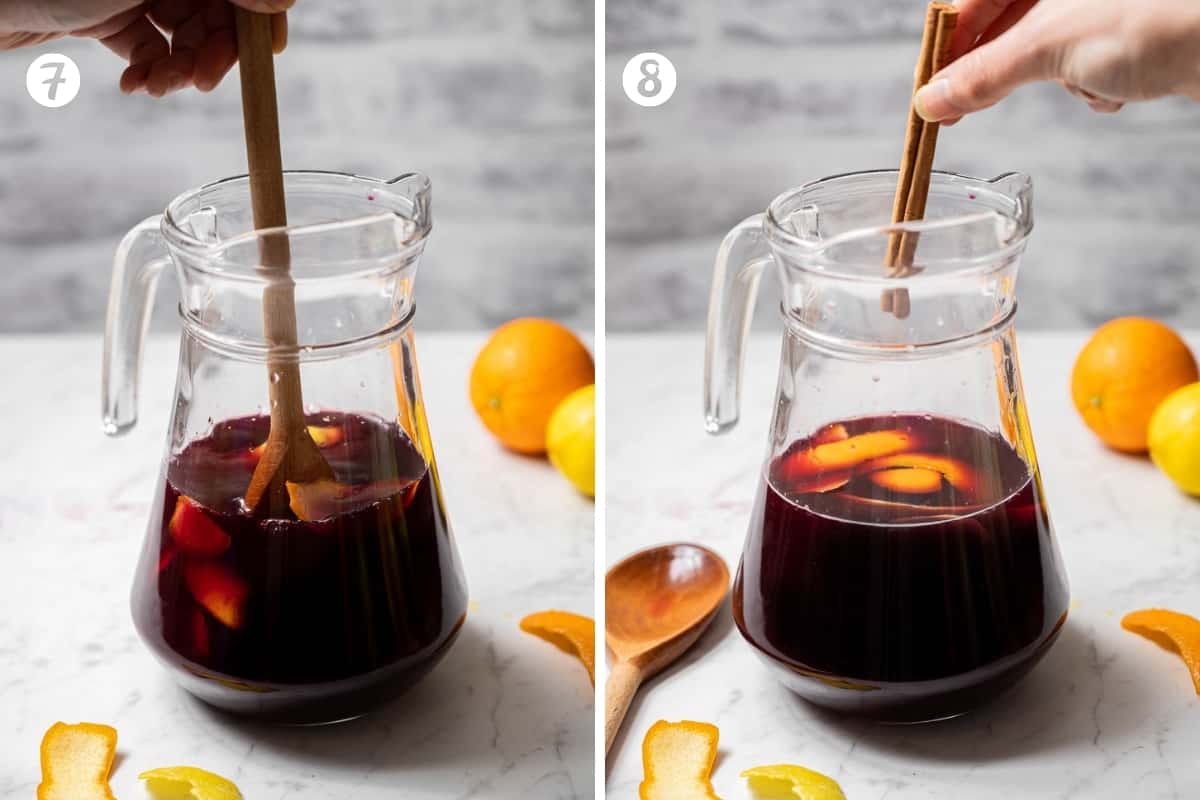
7. Stir everything until it's well combined.
8. Add the spices, any additional fruit, and brandy or alcohol (if using).

9. Voila! You made traditional Spanish sangria to enjoy with your favorite tapas. If you want to use soda, add it right before drinking.
Recipe FAQs
Traditional Spanish sangria is made with red wine, water, herbs, spices, and fruit. Today's sangrias have a wide variety of ingredients, and each recipe is different. Soda and brandy are common modern additions.
The best wine for making sangria is a young and fruity red wine. Any Spanish tempranillo wine would be perfect. You don't want anything aged, and you want to make sure the wine is good quality to avoid a hangover.
Classic sangria is not very high in alcohol (less than a glass of wine) since is it is basically diluted wine. If you add hard alcohol like brandy, however, the alcohol content goes up. It can range from 4-12% alcohol by volume.
Traditional sangria recipes do not include brandy. Brandy is an optional ingredient in sangria that will make the cocktail stronger because of the higher alcohol content.
Traditional Spanish sangria only includes sugar present in the wine and in the fruit added to the sangria. So it is not a very high-sugar beverage. But some people add additional sweeteners, so it depends on the recipe.
Serve
Sangria is the perfect beverage while enjoying a variety of Spanish tapas. Some of my favorite tapas to make with a pitcher (or two!) of sangria are:
- Spinach and chickpeas recipe
- Shrimp with garlic recipe
- Fried eggplant with honey recipe
- Ham croquettes recipe
- Sesame cheese puffs with honey
- Almond coated fried goat's cheese
- My favorite Spanish empanada recipe
- Homemade patatas bravas recipe
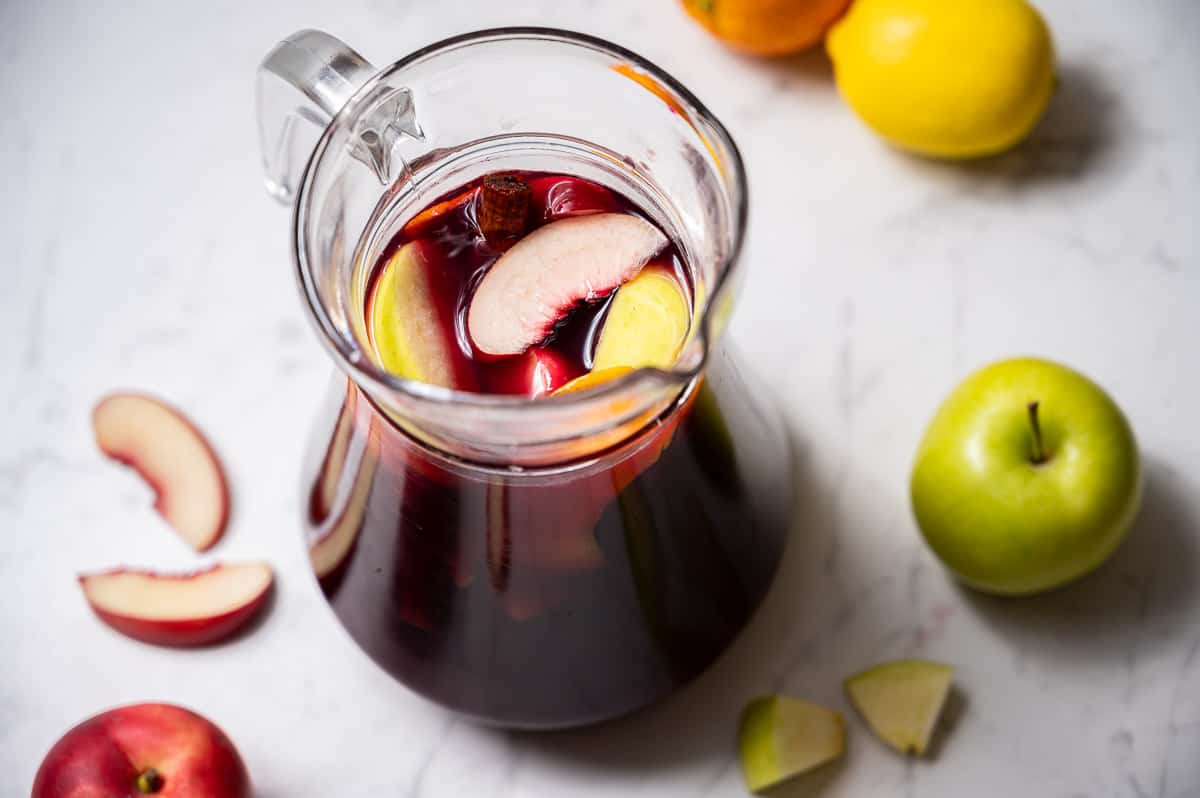
Store
Make Ahead: Sangria can be made ahead of time, and it actually tastes better that way. I recommend making sangria the night before serving it, which gives the fruit plenty of time to macerate and release flavor. Then, right before serving, add the soda (if using).
Leftovers: I recommend keeping sangria no more than two days in the fridge. By that point, the fruit is past its prime.
Expert Tips
- Use the right red wine. Choose a good quality young, fruity red wine that doesn't have an oak flavor. Avoid poor quality wines to prevent hangovers, but don't waste complex, expensive wines on sangria.
- Change up the spices. Experiment with cloves, ginger, anise, allspice, and other warm, sweet spices for a variety of flavors.
- Add the simple syrup to taste. Feel free to omit if you want a less sweet sangria.
- Add fresh green apple, peach, or apricot for a modern touch.
- Let the sangria sit for at least 2 hours, or preferably 8 hours, before serving over ice.
More Sangria Recipes
If you liked this recipe, please share it with others!
Follow Spanish Sabores on Facebook, Pinterest, and Instagram for more recipes and travel tips.
If you've made and enjoyed this recipe, please leave a 5-star review!
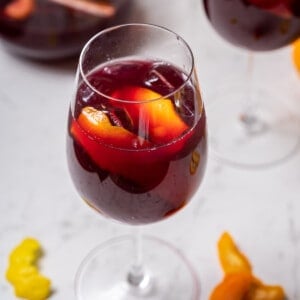
Best Traditional Spanish Sangria Recipe
Ingredients
- ¼ cup simple syrup optional
- 1.5 bottles young, fruity red wine good quality but not oaky or complex
- 2 oranges
- 1 lemon
- 1 cinnamon stick
- 1 green apple cut in chunks (optional)
- 2 peaches or apricots cut in chunks (optional)
- citrus-flavored soda or carbonated water optional
- 2 ounces brandy, vermouth, or other hard liquor optional
Instructions
- Make the simple syrup by dissolving 3 tablespoons (38g) of granulated sugar in 3 tablespoons (45 ml) of water over medium heat, then set aside to chill until ready to use.
- Wash the lemons and oranges, then cut off thick pieces of rind. Juice the lemons and oranges.
- Pour the wine, orange juice, lemon juice, and brandy (if using) into a large pitcher or pot and stir to combine.
- Add simple syrup to taste, then add the cinnamon stick and lemon and orange rind. Add the chunks of green apple and peaches/apricots at this stage if using.
- Let the sangria sit for at least 2 hours (preferably overnight) to allow the wine to take on the aromas of the citrus rind and cinnamon.
- Serve over ice. Add soda or carbonated water right before drinking if desired.
Notes
- Use the right red wine. Choose a good quality young, fruity red wine that doesn't have an oak flavor. Avoid poor quality wines to prevent hangovers, but don't waste complex, expensive wines on sangria.
- Change up the spices. Experiment with cloves, ginger, anise, allspice, and other warm, sweet spices for a variety of flavors.
- Add the simple syrup to taste. Feel free to omit if you want a less sweet sangria.
- Add fresh green apple, peach, or apricot for a modern touch.
- Let the sangria sit for at least 2 hours, or preferably 8 hours, before serving over ice.
Nutrition
Photography by Giulia Verdinelli


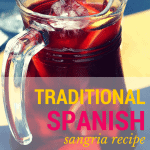
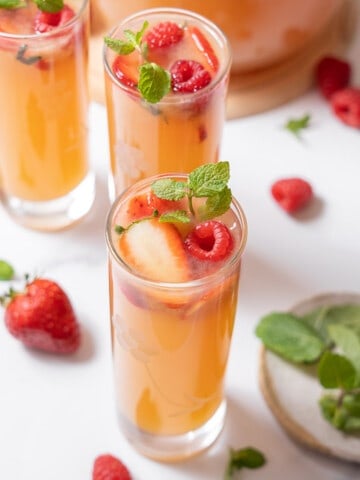
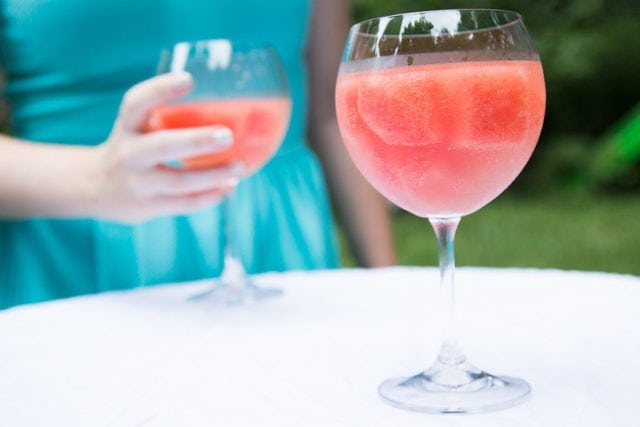
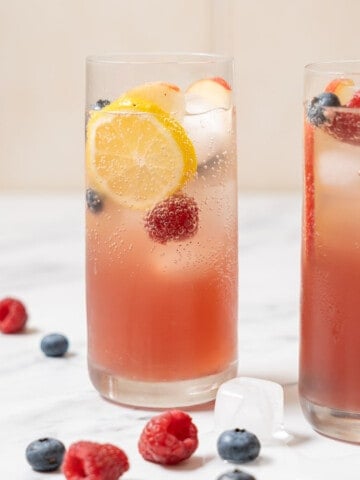
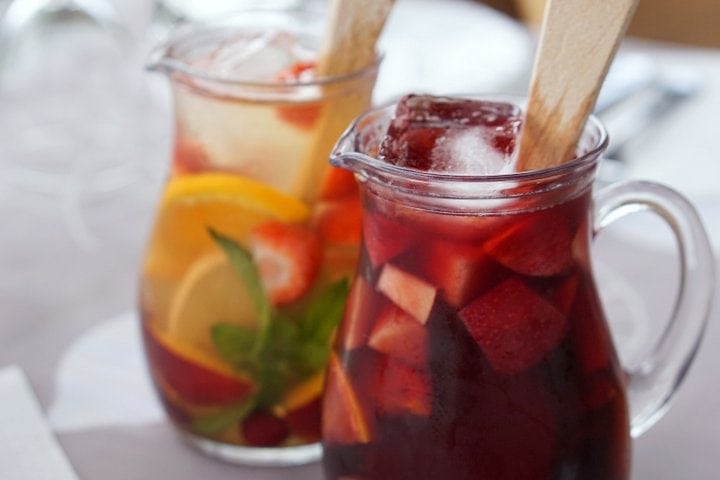

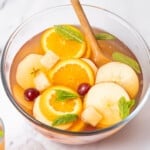
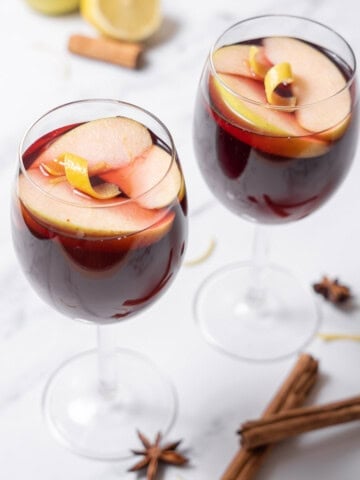

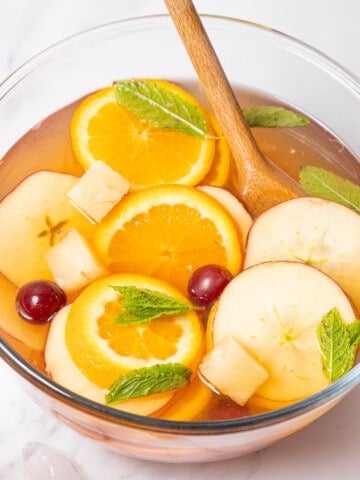
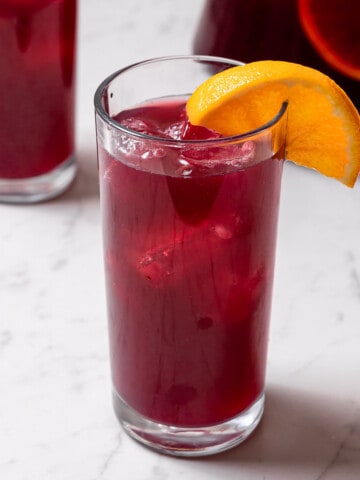
EVA
I was first introduced to sangría when living in Madrid in the early 70s. I got my recipe from a friend from Algeciras. I serve it often to guests and at parties. I do not juice the citrus, just slice oranges, lemons, and limes, put them in a glass pitcher, fill it with wine, and put it in the fridge overnight. I used to add some sugar also, no fizzy stuff or hard liquor. Now I like it a little lighter, so no sugar, but just before serving I add a little Sprite (wish I could get lemon soda here!) I like to add strawberries in the spring & summer. It's always a hit. You've made my mouth water today with your recipe. Thinking now it might be good for Easter!
Jorge
I’m Spanish, and from Valencia. Sangria is very very popular in Valencia, and it’s not drunk with meals but usually used for parties. Saying sangria is not popular in Spain is outright wrong… I think you need to mingle with Spaniards (of all social strata) more to make such statements. It’s particularly popular in low-medium socioeconomic classes.
Of course it goes without saying the popularity of the drink is not due to the Americans. British, German and French have been raving about sangria for a lot longer than Americans have. I’ll grant you the popularity in US might very well be due to the reasons you mention, but that’s not the case elsewhere.
Respectfully, a passionate Spaniard,
- Jorge
mike
on your sagria " recipe"I lived in a pueblo in the Valencia region for more than 15 years,and ALL the old villagers told me apart from cheap red wine wine there was no recipe.All they did was throw anything and everything into a big jug,with some ice,and drink it.This includes,any bits of spirits,etc,also hits of left over cider,etc. So it's really up to you what you want in it.Just pour it all in AND drink and enjoy.
Ash West
Looks great! I'm not a fan of soda in my Sangria.. good to know I'm just keeping up with tradition!
Michelle
In New Mexico, USA, sangria is like a backyard bbq punch, haha. You make it at home, but probably won’t find people asking for it in a restaurant.
We do red wine, orange and lemon slices (limes are an option too), orange juice, brandy, grand mariner or another orange liqueur (optional), simple syrup (optional), and a cinnamon stick. Very similar. But my favorite add-on that I never skip now are berries. You can use any kind, but big sweet cherries and raspberries are the best.
Jorge Muñoz
I have been making Sangria with Dark rum, my friends love it.
Just enough to give a little flavor.
I would like to hear if you have a recipe for Pulpo Gallego.
Lauren Aloise
Yum, that sounds great! I have never made pulpo a la gallega (yet)! Will post if/when I do 🙂
Carlos Guevara
The above recipe is more of a modern version of Traditional Spanish Sangria, which does not generally squeeze any juices into the wine. The basic idea is that you should still see a clear wine color, or actually see through the wine if you decide to add water, or a "gaseosa." Yes. My grandparents did occasionally add sugar to the mix, but not all the time. Keep in mind that sangria was a refreshing drink of choice on hot days; especially for farmers, peasants and hunters. Later on it became more of a festive component of family gatherings. It was not intended as an all year-round beverage. The key was simplicity of ingredients.
The very basic traditional recipe is:
1. Red wine
2. Water, or soda (optional)
3. Cut up lemons (without juicing)
4. Cut up oranges (without juicing)
5. No other fruit!
The "juicing" is left up to the individual drinker! 🙂
Now don't get me started on traditional paella...
Lauren Aloise
Thanks for that Carlos! Definitely agree, although in recent years traditional has come to mean something else! Remember that originally it would have definitely been water, because soda is a more recent ingredient. I've also read that spices were likely in the original sangrias, and that oranges often weren't.
Jenna
Currently in Spain and traditional sangria includes brandy. It's delicious!!
Lauren Aloise
Hi Jenna, thanks for the comment! I mention in the post that you can fortify the drink with brandy or vermouth if you want. Many of the bars here in Madrid make it with vermouth, and but you can read in my article on Vaya Madrid (http://vayamadrid.com/sangria-history-and-symbol-of-spain/) the most traditional of all were essentially water, wine and fruits/spices. There really is no one national recipe, though definitely many people fortify with the great brandies from Jerez.
Jenna
Thank you for your lengthy response. Noted....
I love researching on my own, and hearing about traditions from my family that's here in Spain. But thank you!
Lauren Aloise
Of course! And nothing is clear cut when it comes to food history!
Jo-Lynne Shane
This is so interesting! I definitely want to try some of these. Thanks for featuring my recipe! I know you wrote this a while ago, but I just discovered it. 🙂
Lauren Aloise
Thanks for commenting, your version is great!
Pamela Goldwick
Hey there! I really liked your website as I´m living in south Spain since now two years.
I came here thanks to http://www.onspanishline.com , because I was learning spanish and they convinced me to move here, thanks God! Sangría is one of my special dishes, where I live in Granada they make with so many arabian mixtures, it tastes awesome!
Thanks for the blog!
Jonny Blair
Excited to try this one today!
Jonny Blair
Worth the try!
Kirstie
I'm missing sangría here in Australia, so I may have to give this a try!
Kaley
Hahaha, I always say you should choose a wine that's not Don Simon or its ilk but also nothing above €3 either! You definitely don't want a cheap-wine hangover.
I do love sangria, though I tend to drink it in the U.S.!
Courtney
Sounds delicious! I can't wait to make it!
Trevor Huxham
I had no idea sangría was so simple…and so Spanish as well, what with all the citrus and cinnamon! I like that you pointed out that *traditional* sangría doesn’t include fizzy/carbonated drinks, because they weren’t even invented until about 100 years ago.